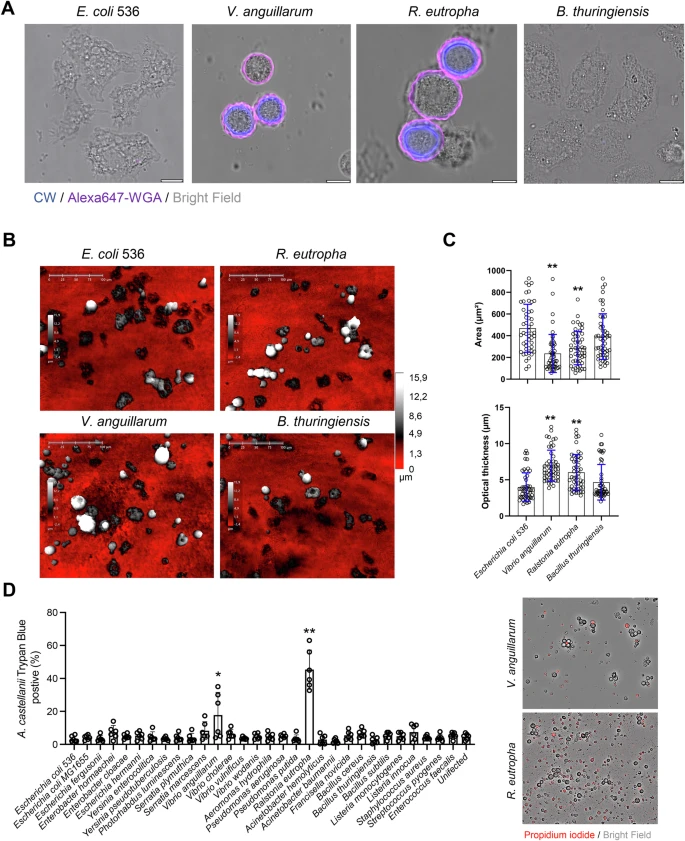Customer Publication

A new understanding of Acanthamoeba castellanii: dispelling the role of bacterial pore-forming toxins in cyst formation and amoebicidal actions
Journal: Cell Death Discovery (2025)
Institution: Department of Molecular Biology and Umeå Centre for Microbial Research (UCMR), Umeå University, Umeå, Sweden
Research Areas: Environmental Microbiology
Cell Lines: A, castellanii (bacteria), RAW 264, 7 macrophage
Summary: This study explores how pore-forming toxin (PFT)-producing bacteria affect the environmental host Acanthamoeba castellanii. Using high-throughput imaging, microscopy, and cytotoxicity assays, researchers found that A. castellanii shows resistance to PFT-induced damage, unlike mammalian cells. Cyst formation in A. castellanii did not correlate with PFT presence, though Vibrio anguillarum and Ralstonia eutropha caused notable cytotoxicity. These results suggest A. castellanii may act as a resilient reservoir for pathogens in the environment. The HoloMonitor M4 was used to study the changes in cell morphology of RAW 264.7 macrophages and A. castellanii after they been infected by different PFT producing bacteria.